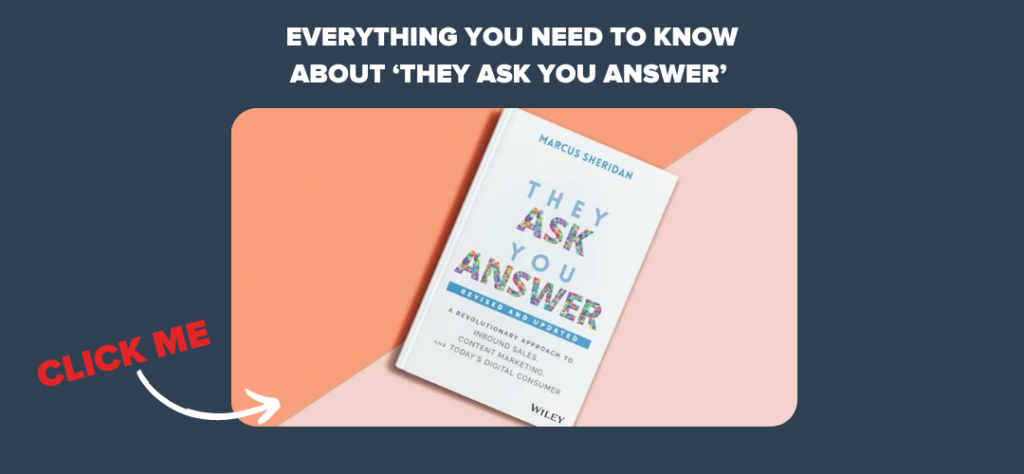Stop me if this sounds familiar: You’ve invested time and effort into optimising your website’s SEO, but the results are still disappointing. Despite your best efforts, your site isn’t ranking where you’d like, traffic isn’t growing, and it feels like the more you try, the less you see improvements.
If this resonates with you, you’re not alone. Many website owners and marketers run into similar frustrations when trying to navigate the complex world of SEO. The truth is, SEO problems are common, but they’re also solvable—once you understand what’s going wrong.
We’ve spent years helping businesses identify and fix the most stubborn SEO issues. From poor content quality to keyword missteps and technical errors, we’ve seen it all.
With Google continuously updating its algorithms, like the Helpful Content Update, the rules of SEO are always shifting.
In this article, you’ll discover five of the most common SEO problems and, more importantly, how to solve them. By the end of this article, you’ll walk away with actionable steps to get your SEO back on track.
1. Poor Quality Content

When it comes to SEO, content is king. But not just any content will do—you need to create high-quality, helpful content that serves your audience.
Poor quality content that’s either thin, irrelevant, or stuffed with keywords doesn’t just hurt your search rankings—it actively drives users away.
The Impact of Google’s Helpful Content Update
Google’s Helpful Content Update, rolled out in recent years, focuses on rewarding content that provides real value to readers. It’s part of Google’s shift toward prioritising people-first content, rather than content written solely to game the system with keywords and SEO tricks.
If your content is too shallow or fails to answer your buyer’s most pressing questions, it won’t rank well—even if you’ve optimised other elements like keywords or page speed.
Google wants to ensure that when users click through to a website, they get the information they were searching for, and they’ll penalise sites that don’t deliver that.
How to Write Content That Ranks Well

To solve the issue of poor quality content, you need to think like your audience. Ask yourself:
- What are my readers searching for? Ensure that your content addresses their questions, concerns, and needs. This means researching user intent—why people are searching for certain keywords—and then crafting content that answers those specific needs in a clear and thorough way
- Is my content unique and valuable? Don’t just regurgitate what’s already out there. Make your content stand out by offering fresh insights, practical advice, or a new perspective on the topic
- Is my content readable? Make sure it’s structured well, easy to scan, and not overloaded with jargon. Readers—and Google—prefer content that’s easy to digest
Actionable Tips:
- Focus on user-first content: Write with your audience’s needs in mind, not just for search engines
- Cover topics in-depth: Instead of publishing lots of short posts, aim for fewer but more comprehensive ones that thoroughly explore the topic
- Update old content: Refresh outdated posts to keep them relevant and valuable, especially if they are still getting traffic
- Use tools like Google Search Console and SemRush: This helps you track which search queries bring users to your site and whether your content matches their expectations
By ensuring that your content is both helpful and valuable, you’ll not only satisfy your readers but also signal to Google that your site deserves a higher rank.
2. Not Posting Frequently Enough
One of the biggest mistakes people make when trying to improve their SEO is not posting content frequently enough.
While quality is crucial, consistent content production is just as important for generating the kind of momentum that leads to significant growth.
In fact, we recommend posting three times a week as the sweet spot for SEO success.
The Power of Posting Three Times a Week
Publishing three high-quality articles a week can be a game-changer for your SEO. This frequency allows you to cover a range of topics and keywords, giving search engines more opportunities to crawl your site and index fresh content.
Over time, you’ll see what many call a hockey-stick growth pattern: slow and steady at first, but then an upward spike as your content builds authority and begins to rank for more keywords.

When you post consistently, Google recognises your site as active and authoritative, which increases the chances of your content appearing in search results. With every new post, you’re expanding your keyword reach, attracting more backlinks, and increasing the likelihood of ranking for a variety of search terms.
You might ask, ‘why not more than three posts?’ For whatever reason, we’ve discovered that three per week works best.
Actionable Tips:
- Commit to a schedule: Plan to publish three times a week, whether it’s on set days or spaced evenly across the week. This consistency signals to Google that your site is regularly updated
- Diversify your content: Use this frequency to cover a range of keywords, from broad topics to more specific, long-tail queries, to maximise your SEO potential
- Focus on quality: While quantity matters, you still need to ensure each post is valuable, well-researched, and optimised for your target audience
By committing to posting three times a week, you can build momentum that leads to long-term SEO success. It’s the kind of strategy that may feel slow at first, but as your content accumulates, you’ll experience the hockey-stick growth that takes your traffic and rankings to the next level.
3. Poor Keyword Optimisation
Keywords are the foundation of any good SEO strategy, but if you’re not optimising them correctly, you’re likely missing out on valuable search traffic.
Poor keyword optimisation can take many forms, from targeting the wrong keywords to overusing them (keyword stuffing). Both issues can hurt your rankings and make it harder for search engines to understand your content.
The Problem with Targeting the Wrong Keywords
One of the most common mistakes is targeting keywords that are too broad, too competitive, or not relevant enough to what your audience is searching for. For example, if you’re a local business trying to rank for a general keyword like “shoes,” you’ll find yourself competing with major retailers like Nike and Zappos—making it nearly impossible to rank.
Instead, you should focus on long-tail keywords, which are more specific and often have less competition. These keywords might not get as much search volume, but they tend to attract more qualified traffic. For example, instead of targeting “shoes,” a local business could aim for “best running shoes in Manchester.” Not only is this keyword easier to rank for, but it also captures people with clearer intent who are more likely to convert.
The Dangers of Keyword Stuffing
At the other end of the spectrum is keyword stuffing—overloading your content with your target keyword in an attempt to game the system. This tactic used to work, but Google’s algorithms have become much smarter. Now, keyword stuffing not only looks bad to readers but can also result in search penalties, as Google sees this as manipulative behaviour.
Instead, focus on natural keyword placement. Use your primary keyword strategically in key areas like the title, meta description, headers, and a few times throughout the body. Then, include relevant synonyms and variations to help Google better understand the topic without overdoing it.
How to Optimise Your Keywords Properly
Effective keyword optimisation is all about balance. Here’s how to get it right:
- Do proper keyword research: Use tools like Google Keyword Planner, SEMrush, or Ahrefs to find long-tail keywords that your audience is searching for. Look for keywords with moderate search volume and lower competition
- Use keywords naturally: Don’t force your keyword into every sentence. Instead, sprinkle it naturally throughout your content and use related terms to make your article flow
- Focus on user intent: Think about the searcher’s goal. Are they looking for information, ready to make a purchase, or comparing options? Tailor your content to meet their intent rather than just focusing on ranking for a specific keyword
- Target long-tail keywords: Focus on specific, lower-competition keywords that match the intent of your audience
- Optimise key areas: Include your main keyword in important areas like your title, headers, URL, and meta descriptions without overusing it
- Monitor keyword performance: Use SEO tools like Google Search Console and SEMrush to track which keywords are driving the most traffic to your site, and adjust your content strategy accordingly
By fixing poor keyword optimisation, you’ll not only improve your search rankings but also attract the right audience—those who are more likely to engage with your content and convert.
4. Slow Page Load Speeds
Your website’s load speed is more important than ever for SEO. Google has made it clear that site speed is a key ranking factor, particularly with the rise of mobile searches. A slow-loading website frustrates users, leading to higher bounce rates and fewer conversions, which in turn signals to search engines that your site is offering a poor user experience.
In short, a slow site means fewer visitors, lower rankings, and lost revenue.
The Problem with Slow Pages
Studies show that if a page takes longer than three seconds to load, over half of your visitors will leave. That’s a huge missed opportunity, especially when you consider that Google’s algorithms also factor in load times when determining rankings. The slower your site, the more likely you are to slip down the search results.
Page load speed issues are often caused by:
- Large image files that take too long to render
- Unoptimised code or excessive use of JavaScript
- Too many redirects or broken links
- Slow server response times, especially on shared hosting platforms
How to Speed Up Your Site
The good news is that slow load times can be fixed with a few optimisations. Here are the key areas to focus on:
- Optimise images: Large images are one of the most common culprits for slow pages. Compress images without sacrificing quality and use modern file formats like WebP to reduce file sizes
- Enable browser caching: Caching allows your site to store commonly used resources (like images and stylesheets) so that they load more quickly for returning visitors
- Minify CSS, JavaScript, and HTML: Reducing the size of your code files by removing unnecessary characters (like spaces and comments) can make your site load faster. Tools like WP Rocket or Autoptimize can automate this process
- Use a content delivery network (CDN): A CDN distributes your site’s content across multiple servers worldwide, ensuring faster load times by delivering content from the server closest to the user
- Upgrade your hosting: If you’re using shared hosting and experiencing slow server response times, upgrading to a dedicated server or VPS can make a noticeable difference in site speed
- Use Google PageSpeed Insights: This free tool from Google helps you measure your site’s performance and gives suggestions for speeding it up
By speeding up your site, you’ll not only enhance user experience but also boost your SEO performance.
Google rewards fast-loading sites with higher rankings, and your visitors will appreciate a site that doesn’t keep them waiting.
5. Duplicate Content
Duplicate content is a sneaky issue that can seriously harm your SEO efforts if not addressed. When search engines encounter multiple pages with the same or very similar content, they struggle to determine which version to rank.
This can result in neither page ranking well, and in some cases, you may even get penalised for having duplicate content on your site.
Why Duplicate Content Hurts Your SEO
Search engines like Google aim to provide users with the most relevant and unique content for their queries. If multiple pages on your site (or across different sites) have the same content, Google won’t know which one to prioritise. As a result, all versions of the content may rank lower, reducing the overall visibility of your site.
Duplicate content can arise from several scenarios:
- Multiple URLs with the same content: For example, if both your “www” and “non-www” versions of a site are accessible, or if your content appears with and without “https”
- Product pages on e-commerce sites: These often have the same descriptions across different categories or variations
- Scraped or copied content: Content copied from other sites or republished without proper changes can also lead to duplicate content issues
How to Fix Duplicate Content
The first step in fixing duplicate content is identifying where it exists on your site. Use tools like Screaming Frog or Copyscape to scan for duplicate content issues, whether they’re internal (within your own site) or external (duplicated across different domains).
Once identified, here are a few strategies to fix or prevent duplicate content:
- Canonical Tags: Adding a canonical tag to your page tells search engines which version of the page is the “official” one. This is especially useful for e-commerce sites that have similar product pages or multiple URLs for the same content
- 301 Redirects: If you have duplicate pages that don’t serve a purpose, use 301 redirects to point them to the preferred version. This helps consolidate link equity and avoids confusing search engines
- Unique Meta Tags: Even if pages have similar content, make sure the meta descriptions and title tags are unique. This helps differentiate your pages in search engine results
- Avoid Content Scraping: If someone else is duplicating your content on their site, it’s important to reach out and request its removal or file a DMCA request with Google
By eliminating duplicate content, you’ll help Google index the right pages on your site, giving them a better chance of ranking. More importantly, you’ll avoid confusing both search engines and users, ensuring your content is seen as valuable and original.
So, What’s Next?
SEO can be a tricky landscape to navigate, but understanding and addressing common problems is the first step toward seeing real improvement.
Remember, SEO isn’t about overnight results—it’s about building momentum over time. Implementing these fixes can feel slow at first, but with patience and consistency, you’ll see your traffic grow and rankings improve. It’s all about finding that balance between giving your audience what they need and ensuring your site meets search engine expectations.
Want more SEO tips? Check out our article on 20 things you can do to improve SEO even if nothing else has worked.
Read: 20 Tips on How to Improve SEO, Even if Nothing Else is Working













